v13n6 About this Issue, Thanks!, 2018 Preview and Future Issues
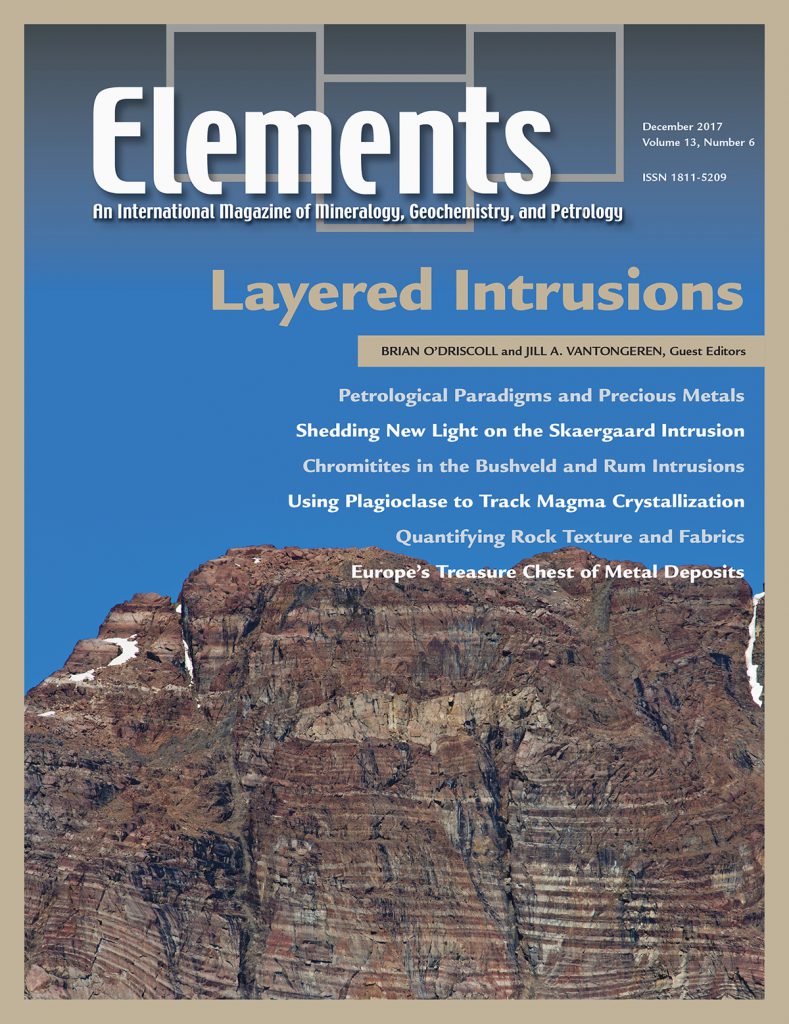
In our final issue of 2017, we like to take a moment to extend our appreciation to the guest editors and authors who contributed to the six issues of volume 13. These men and women volunteered their valuable time for writing interesting and accessible articles for Elements’ scientifically diverse audience. We also thank our feature editors (Ian Parsons, Michael Wiedenbeck, Cari Corrigan, and Andrea Koziol) who produce the Parting Shots, The Elements Toolkit, CosmoElements, and the Meetings Calendar. We also acknowledge the reviewers, our copyeditor Patrick Roycroft, and our graphic artist Michel Guay, who diligently work in the background to bring Elements to life.
v13n5 About This Issue, 2017 Editorial Meeting
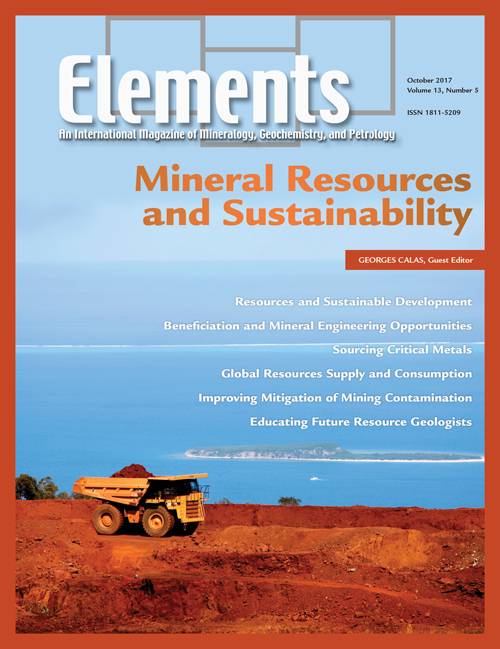
On Sunday, 13 August 2017, the Elements editorial team held their annual staff meeting in Paris (France). The meeting was an invaluable opportunity for our international team to discuss, face-to-face, editorial matters. We addressed the problems and logistics of handling manuscripts, evaluating proposals, setting the topical lineup for the first half of 2019, and we explored the challenges and opportunities for our magazine in this digital age of the internet, social media, and YouTube. We also met with the Elements Executive Committee. The members of this committee represent the 17 participating societies and it is they who oversee the financial aspects of our publication. It was a long but productive day.
About v13n4 – One in a Million; 2016 Impact Factor = 4.0
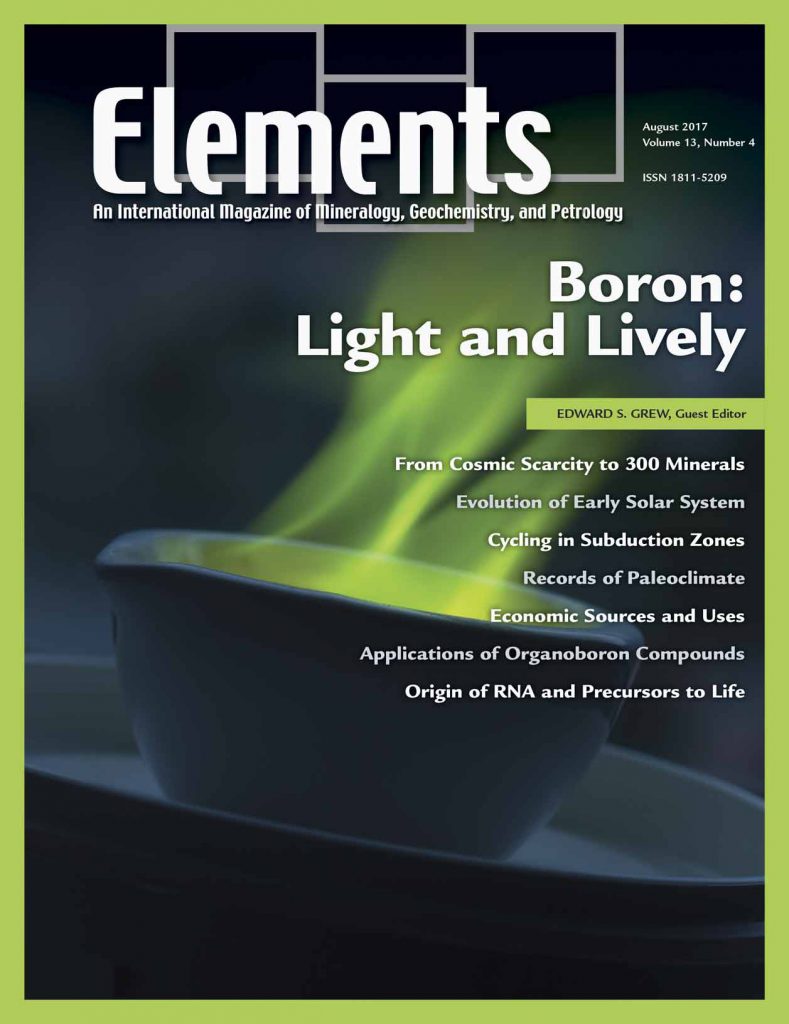
Due to its impact on global climate, carbon is the element that currently dominates the public debate. Why publish an issue on boron when the public is focusing on carbon? As you read the articles in this issue, what you will find is that boron is a “quintessential” terrestrial element. Although rare in the Solar System, Earth’s tectonic and weathering processes have concentrated boron within the Earth’s upper continental crust, where we are completely dependent on it for everyday life.
About v13n3, Jon Blundy new PE, Elements at Goldschmidt2017, Propose a Topic
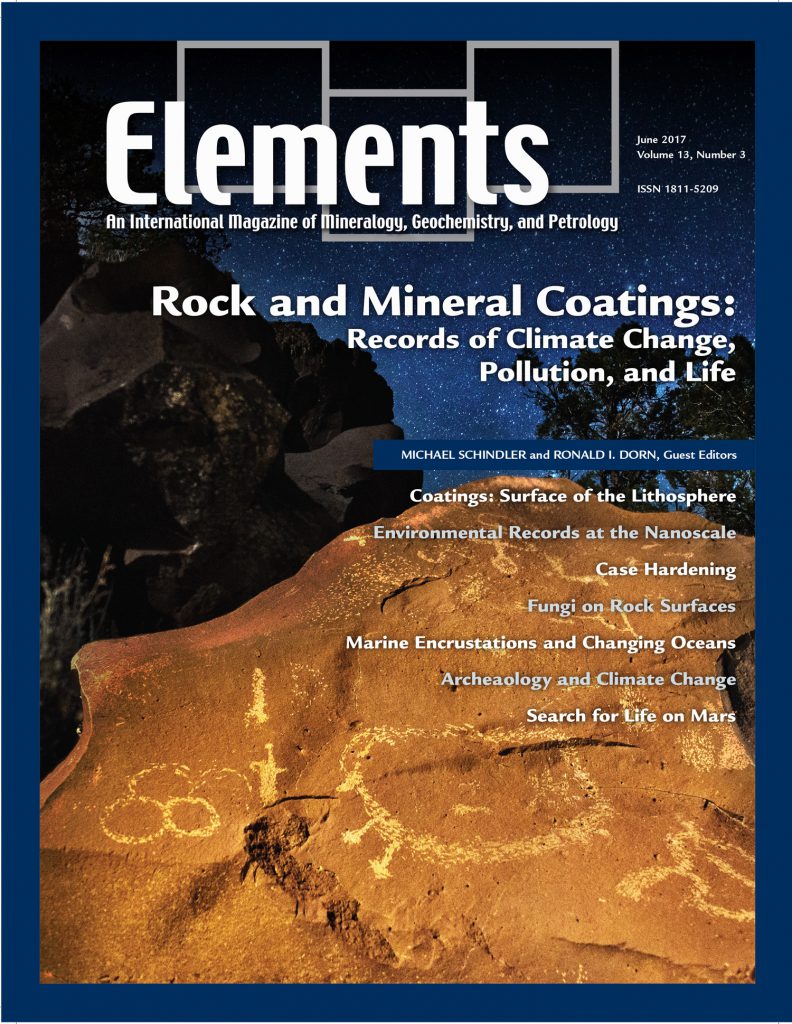
Rock and mineral coatings, the thin and fascinating varnishes portrayed in this issue of Elements, are found in deserts, soils, sediment, oceans, Mars and on buildings or other manmade structures. They record the legacy of millions of years of ocean circulation, thousands of years of climate change, and tens of years of anthropogenic contaminant dispersal. Rock coatings teach us how life can both dissolve and form minerals and how it can survive some of the most extreme environmental conditions. Our early ancestors used petroglyphs carved into these coatings to depict hunting scenes, religious and cultural context, and to communicate geographical, and even astronomical, information. On every continent (except Antarctica), we can view some of our cultural heritage, preserved over thousands of years. Rock coatings have even been spotted on Mars by the NASA rovers Spirit and Opportunity.
About v13n2, Sulfur or Sulphur?, Call for Proposals, Social Media
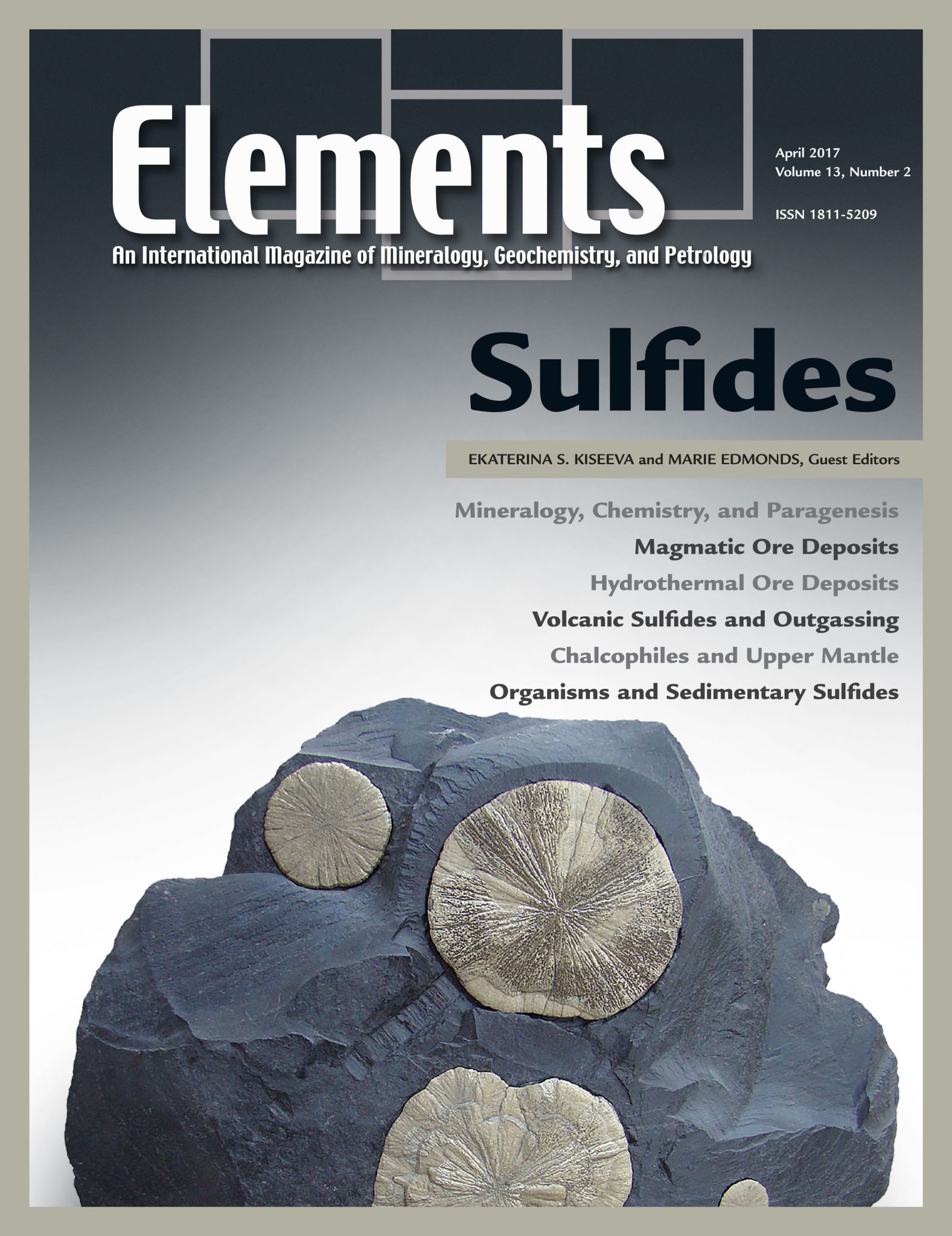
Elements magazine tries hard to be an internationally oriented and inclusive scientific publication. As such, Elements accepts texts written in American English or British English and it has been Elements’ policy to allow authors to choose between the American or British writing style and spelling. Our purpose in this is to pay respect to international differences and, as a result, help preserve these differences.
About v13n1, Thank You Gordon Brown, Welcome Nancy Ross!
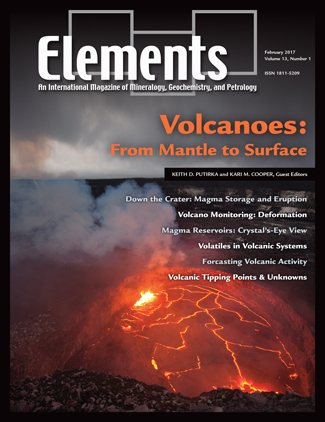
Volcanoes are the powerhouses of nature that can, within minutes, transform a beautiful mountainscape into a desolate landscape devoid of life. Whether eruptions are mild or catastrophic, volcanoes fascinate and captivate us. As this issue goes to press (February 2017), there are 33 volcanoes erupting throughout the world, with another 1,500 active volcanoes slumbering until the conditions are right for an eruption. Some of those slumbering volcanoes have nasty histories, such as the supervolcano Campi Flegrei (near Naples, Italy) that is currently making headlines because it is seemingly approaching a “critical state”. The articles in this issue present our current understanding of how such volcanoes work and give us a glimpse into the world of magma – how it is formed and how it is transported to the surface. Much remains unknown the plumbing systems of volcanoes or what triggers an eruption. But, as you will read, scientists are making significant progress in uncovering the secrets of these powerhouses, which ultimately helps our world to be a safer place to live.

